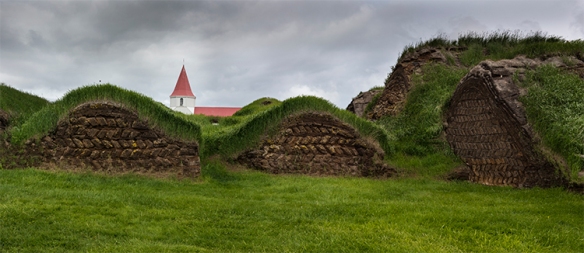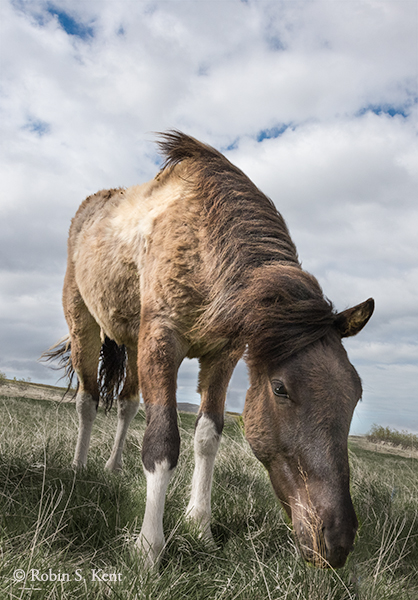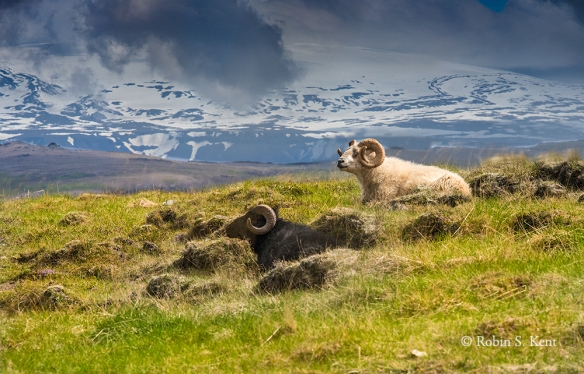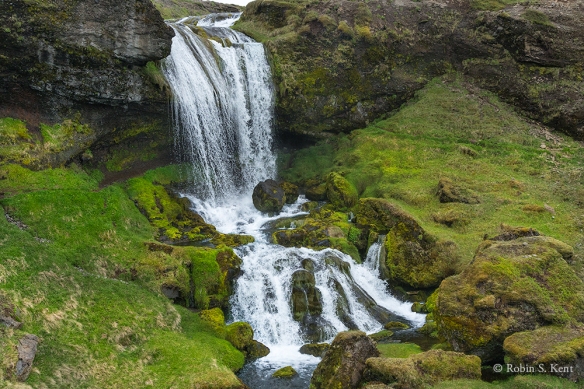As mentioned in last week’s post, possible subjects for night-time shooting include cityscapes, landscapes, a staged scenario, and astronomical phenomena. In the case of cityscapes, one does not have to live in, or travel to, well-known cities such as Washington, DC, New York City, or Paris.
 Hartford at Twilight
Hartford at Twilight
(Tech: Nikon D800E with 24-70mm f/.28 lens @ 50mm, 3 sec. @ f/16, ISO 400, photomerge)
This was taken during the Nautical Twilight phase, but by looking west, one can still see plenty of light in the sky. The location was chosen because there was good illumination from city lights over most of the scene and the Connecticut River provided a nice reflection of the city lights. Using water to reflect lights can be a very effective technique at night. As before, the glare from the brighter lights was managed by using a small aperture to produce a star effect.
 Pittsburgh at Night
Pittsburgh at Night
(Tech: Nikon D800E with 70-200mm f/2.8 lens @70mm, 1/6th sec. @ f/2.8, ISO 1600)
From this location (an overlook in the 1400 block of Grandview Avenue), the city of Pittsburgh provides a dramatic night scene with plenty of illumination. However, the moving ferry in the river required a relatively short exposure, forcing a setting at a wide aperture and high ISO.
Tactics for Adding Interest
Aside from looking for potential reflections, one can also look for illuminated fountains, use time exposures to incorporate traffic flow, or take advantage of a special event such as temporary art installations or fireworks. The city of Washington, DC has many fountains although most are shut down for the winter.
 WW II Memorial at Twilight
WW II Memorial at Twilight
(Tech: Nikon D800E with 24-70mm f/.28 lens @ 24mm, 8 sec. @ f/14, ISO 400, photomerge)
The primary reason for using a photomerge in this case was to “remove” the tourists in the scene. About 17 separate exposures were made, each of a small section of the scene that did not have anyone in it at that moment. Depending on the situation, there are easier ways to do this in Photoshop, such as the Image Stacking Mode or the Scripts-Statistics process. But those techniques have difficulty with any moving object, such as a flag or moving water, that appears in every image.  Bartholdi Fountain at Twilight
Bartholdi Fountain at Twilight
(Tech: Nikon D800E, 24-70mm f/2.8 lens @ 56mm; 10 sec. @ f/16, ISO 400)
This fountain, dating back to 1876, was created by August Bartholdi, a French artist who is better known for the Statue of Liberty. It is located in Bartholdi Park across Independence Avenue from the US Botanic Garden.
Fountains can be found in most cities around the world; Rome and Paris (see image below) are famous for their fountains, but Kansas City reportedly is second only to Rome in the number of municipal fountains.
 Place Concorde at Twilight, Paris
Place Concorde at Twilight, Paris
(Tech: Nikon D800E, 24-70mm f/2.8 lens @ 24mm; 5 sec. @ f/16, ISO 200)
Moving traffic can pose a problem for night photographers, but, by using a long exposure to create trace lines, what might be a flaw becomes a strength.
 Washington Monument and Kutz Bridge
Washington Monument and Kutz Bridge
(Tech: Nikon D800E, 24-70mm f/2.8 lens @ 38mm; 8 sec. @ f/16, ISO 200)
When shooting at street level, the brightness of oncoming headlights can still be a problem, even with a long exposure. Here the traffic was going away from the camera so only the taillights and the blue warning lights from the police car were visible.
This technique does not have to be restricted to street vehicles. For locations near an airport, aircraft landings and take-offs can also be included as shown in the next two images.
 Final Approach Over Key Bridge
Final Approach Over Key Bridge
(Tech: Nikon D200, 18-200 f/3.5-5.6 lens @ 42mm; 30 sec. @ f/16, ISO 100)
There are several locations where you can capture aircraft landing at National Airport. This was taken on the river’s edge about 200 feet northwest of the Thompson Boat Center.
 Kennedy Center at Night
Kennedy Center at Night
(Tech: Nikon D850, 24-70 f/2.8 lens @ 70mm; 20sec. @ f/18, ISO 100)
Special event illuminations such as the recent display by the Kennedy Center can provide unique opportunities because they usually only last for a short time. This image combines several of the tactics discussed here: a special illumination, trace lights from vehicle traffic and aircraft, and using water to add reflections.
The next and final post in this series will cover astronomical phenomena, photographing the moon, stars, and the Milky Way.
In the meantime, Keep Shooting…………..
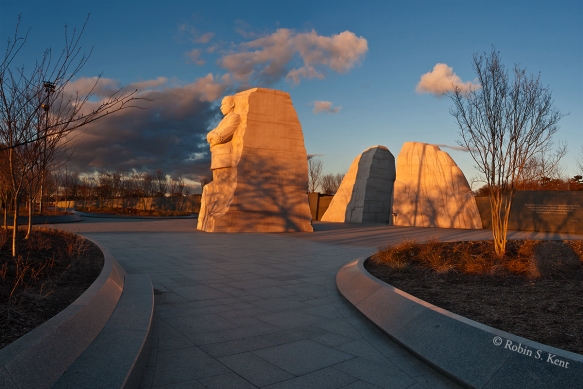 Sunrise, Martin Luther King Memorial
Sunrise, Martin Luther King Memorial
 Moonrise, Lincoln Memorial
Moonrise, Lincoln Memorial Moonrise over Washington DC
Moonrise over Washington DC  Iwo Jima and Crescent Moon
Iwo Jima and Crescent Moon Lunar Eclipse Multiple Exposure
Lunar Eclipse Multiple Exposure Milky Way over Gaylor Lake, Yosemite National Park
Milky Way over Gaylor Lake, Yosemite National Park Star Trails, Sonora Pass, California
Star Trails, Sonora Pass, California Hartford at Twilight
Hartford at Twilight Pittsburgh at Night
Pittsburgh at Night WW II Memorial at Twilight
WW II Memorial at Twilight Bartholdi Fountain at Twilight
Bartholdi Fountain at Twilight Place Concorde at Twilight, Paris
Place Concorde at Twilight, Paris Washington Monument and Kutz Bridge
Washington Monument and Kutz Bridge Final Approach Over Key Bridge
Final Approach Over Key Bridge Kennedy Center at Night
Kennedy Center at Night Moon over Abandoned Pilings, Marquette, Wisconsin
Moon over Abandoned Pilings, Marquette, Wisconsin Night at the Museum, NASA Shuttle Enterprise in the Udvar-Hazy Center
Night at the Museum, NASA Shuttle Enterprise in the Udvar-Hazy Center  Mid-Hudson Bridge, Afternoon Scouting Image
Mid-Hudson Bridge, Afternoon Scouting Image Mid-Hudson Bridge at Dawn, (the next morning)
Mid-Hudson Bridge at Dawn, (the next morning) Transition from Day to Night
Transition from Day to Night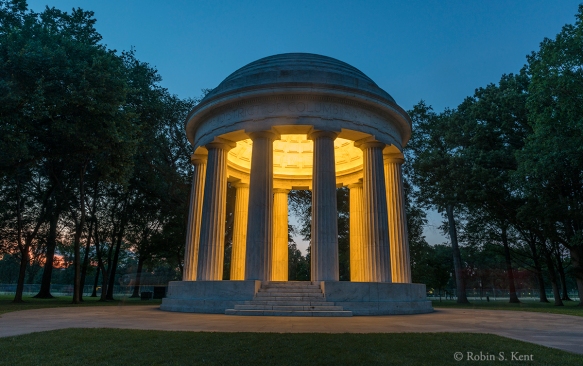 WW I Memorial at Twilight, Washington, DC
WW I Memorial at Twilight, Washington, DC Kennedy Center at Twilight, Washington, DC
Kennedy Center at Twilight, Washington, DC WWW II and Washington Monument at Night
WWW II and Washington Monument at Night County Fair with Moon, Madison, Wisconsin
County Fair with Moon, Madison, Wisconsin Map of Southern Region
Map of Southern Region View from the Reading Room, Hrifunes Guest House
View from the Reading Room, Hrifunes Guest House Dining Area of Hrifunes Guest House
Dining Area of Hrifunes Guest House Undisclosed Location, Southern Iceland
Undisclosed Location, Southern Iceland Field of Lupine
Field of Lupine Hillside Church Overlooking Vik and Reynisdrangar Sea Stacks
Hillside Church Overlooking Vik and Reynisdrangar Sea Stacks Arnardrangur, with Reynisdrangar Sea Stcks in the Distance
Arnardrangur, with Reynisdrangar Sea Stcks in the Distance Skogafoss, Mid-Afternoon Light
Skogafoss, Mid-Afternoon Light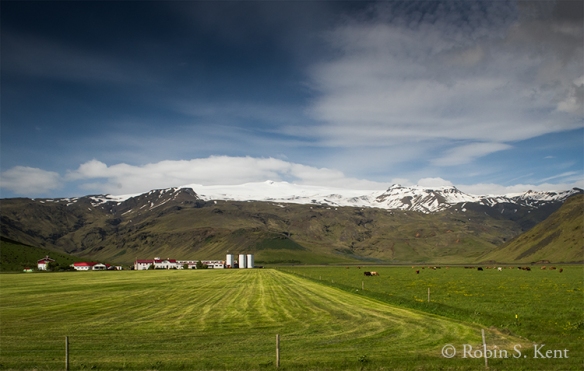 Family Farm in Idyllic Setting
Family Farm in Idyllic Setting
 Detail Map of Area near Jokulsarlon
Detail Map of Area near Jokulsarlon






 Rick and Michele setting up their shots at Fjallsarlon
Rick and Michele setting up their shots at Fjallsarlon


 Volcanic Crater, Early Morning after a Snowfall
Volcanic Crater, Early Morning after a Snowfall
 Namafjall Geothermal Field
Namafjall Geothermal Field Unnamed Lagoon, Somewhere on Highway 1, Lake Myvatn Region
Unnamed Lagoon, Somewhere on Highway 1, Lake Myvatn Region Lamb with its Mother, Somewhere on Highway 1, Lake Myvatn Region
Lamb with its Mother, Somewhere on Highway 1, Lake Myvatn Region Snow on Mountains, Somewhere on Highway 1, Lake Myvatn Region
Snow on Mountains, Somewhere on Highway 1, Lake Myvatn Region Leirhnjukur, View from the Trail (note hikers on top of the hill)
Leirhnjukur, View from the Trail (note hikers on top of the hill) View from the Overlook, Leirhnjukur (Trail is along near edge of black lava field)
View from the Overlook, Leirhnjukur (Trail is along near edge of black lava field) View from Leirhnjukur (Taken just before we began the descent back down to the car)
View from Leirhnjukur (Taken just before we began the descent back down to the car) Dettifoss, View from East Side
Dettifoss, View from East Side Dettifoss, View from East Side (Taken from the edge of cliff about 50 feet above the river)
Dettifoss, View from East Side (Taken from the edge of cliff about 50 feet above the river)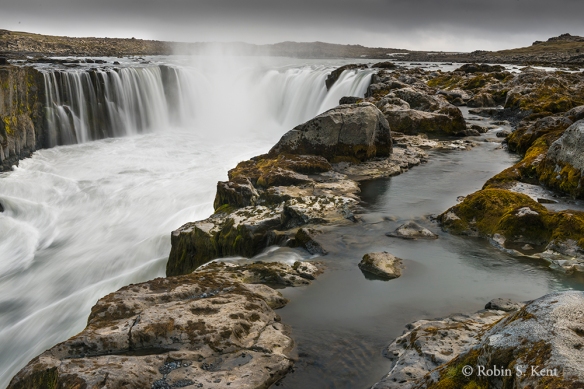 Selfoss, View from East Side
Selfoss, View from East Side



